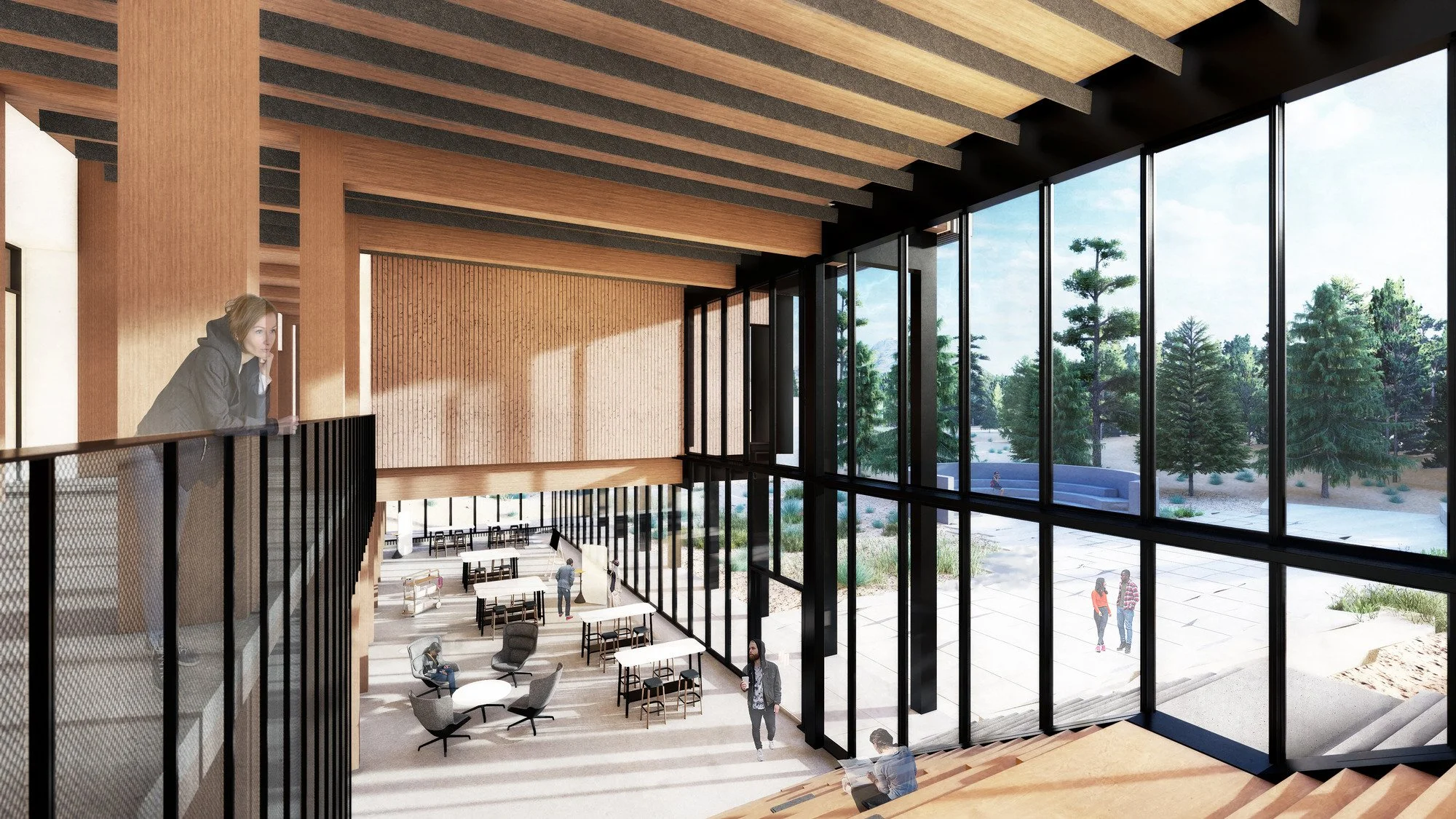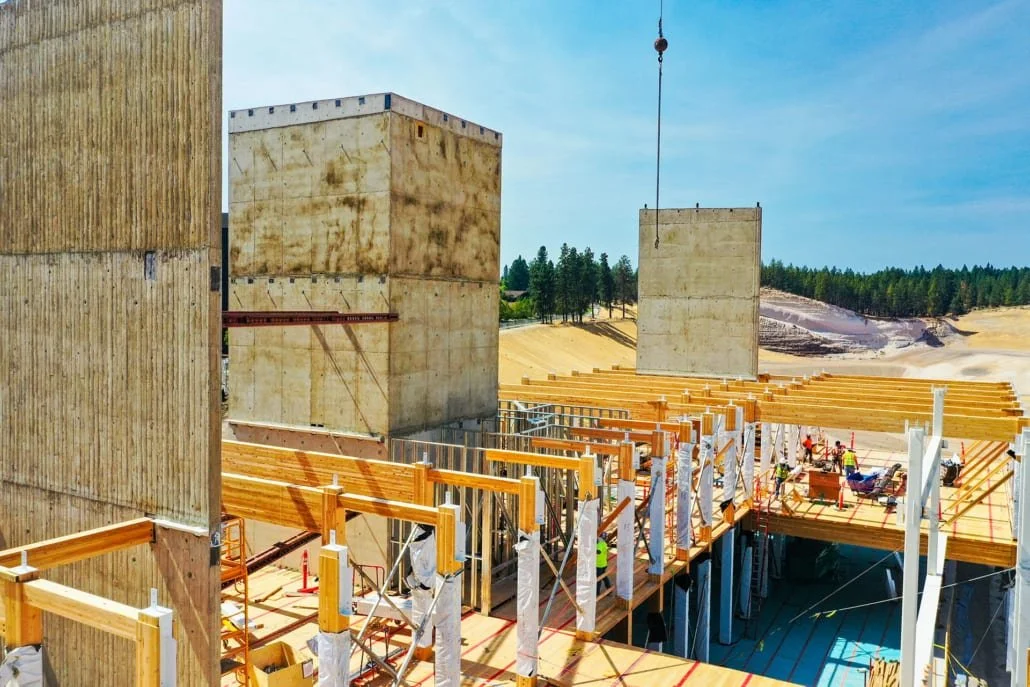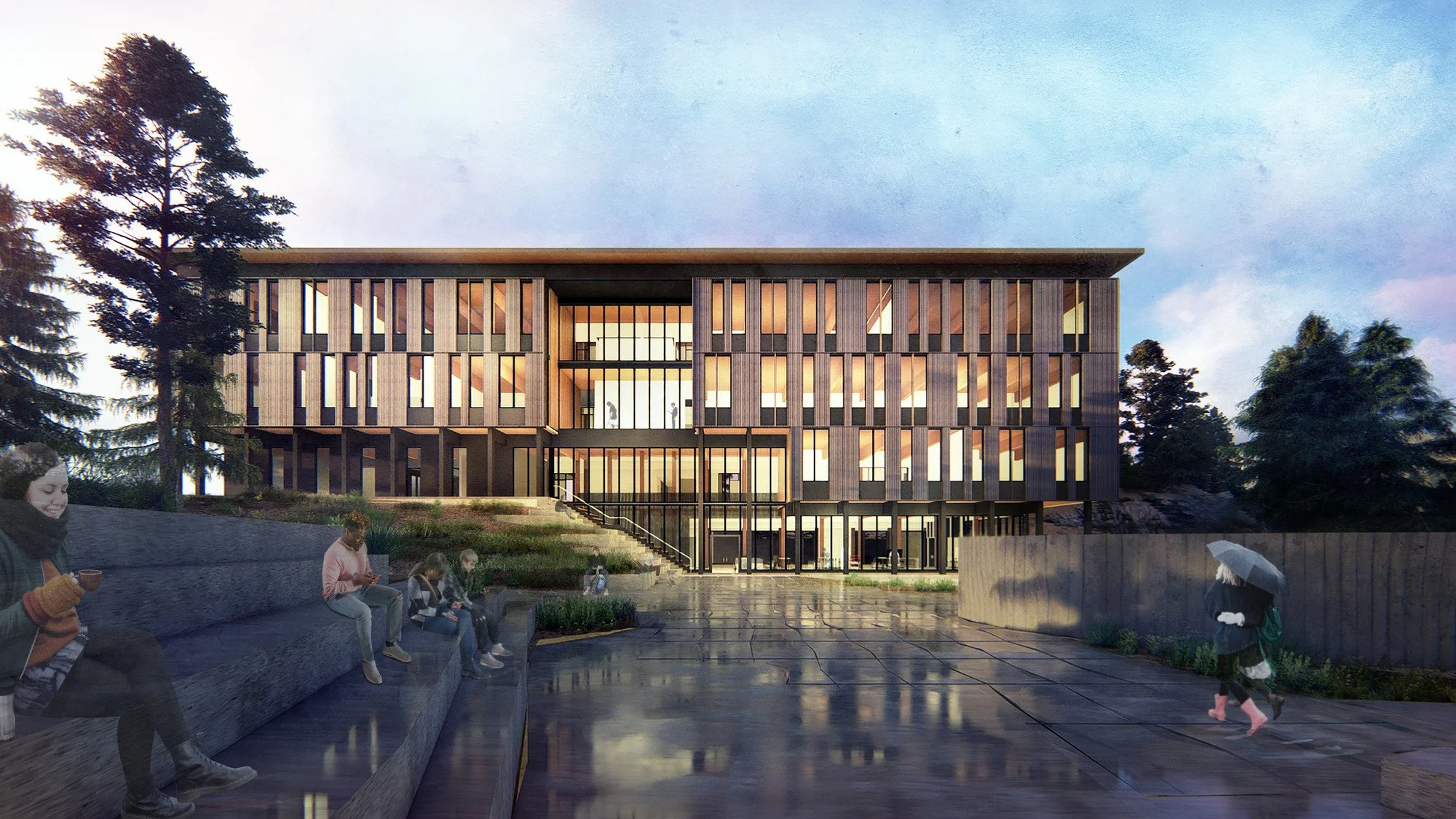The Story of Restoration Wood &
Oregon State University

Where the story begins..

COLVILLE NATIONAL FOREST
SOURCE FOREST
The Mill Creek A to Z Stewardship Project on the Colville National Forest is the first National Forest restoration project of its kind, encompassing 54,000 acres treated to reduce fire risk, improve critical habitat, and provide jobs and sustainable input to local mills. The project was made possible because of a unique stewardship contract between the Colville National Forest and Vaagen Brothers Lumber that enabled the Forest Service to implement restoration at a faster pace than was otherwise possible.
The wood used to make the Cross Laminated Timber (CLT) in the Edward J. Ray Hall building supports forest restoration work on the Colville National Forest. The product was fabricated by Vaagen Timbers with lumber milled at Vaagen Brothers Lumber, in connection to the A - Z Stewardship Project.
YAKAMA FOREST PRODUCTS
SOURCE FOREST
The Yakama Nation and its people have lived on and actively managed the landscapes of Central Washington since time immemorial. The current Yakama Reservation is 1.3 million acres. The sale of timber from Yakama forest lands began in 1944. The Yakama Nation’s approach to forest management builds on the cultural view of gratitude that natural resources are a gift. Land and resources must be cared for with the understanding that they will be passed to future generations.
Yakama Forest Products, guided by cultural ecological knowledge and science, operates on the landscape as a critical resource and infrastructure supporting forest health, landscape resilience to climate change, and as an economic tool for the Yakama Nation to provide jobs for the community.

Where the wood went…

VAAGEN BROTHERS MILL
THE MILL
Vaagen Brothers Lumber is a family-owned business since the early 1950s, and they hold a vision for balancing conservation with sustainable yield and can mill logs as small as 4-inch diameter. With the ability to make commercially viable products from small trees, Vaagen Brothers Lumber is an asset to the Colville National Forest (CNF). Until recently, fire suppression promoted the overgrowth of young trees. The A-Z Project is an example where collaboration leads to improved forest health and the local economy.
The wood used to make the Cross Laminated Timber (CLT) in the Ray Hall building was manufactured by Vaagen Timbers, with wood milled at Vaagen Brothers Lumber, in support of forest restoration projects on the CNF.
VAAGEN TIMBERS
THE MANUFACTURER
Vaagen Timbers was created to meet the growing demand for Cross Laminated Timber (CLT) and Glued Laminated Timber (glulam) Beams. Using small-diameter logs milled just down the street at Vaagen Brothers, Vaagen Timbers supports forest restoration, creates jobs in Colville, WA, and makes state-of-the-art wood products.
Small diameter logs from overstocked national forests are transformed into state-of-the-art structural timbers, all within 50 miles of the restored forests where crowding poses a fire risk. This innovation links forest health with local jobs and cuts across the rural-urban divide to provide sustainable wood construction materials.
ZIP-O MILL
THE MILL
Zip-O Log Mills was created in 1944 in the heart of Oregon’s timberland. Zip-O sources timber from the surrounding forests of Eugene in the mid-Willamette Valley, specializing in large beams, joists, and in large timbers.
Over 75 years ago, the Hallstrom family founded Zip-O-Log Mills with one simple goal: to produce high-quality products with exceptional service. In 2016, these principles were used to create Zip-O-Laminators with the aim to bring that same quality and service into the engineered wood product market. Zip-O has on-site kilns and emphasizes meeting the needs of any project including large-scale projects like the OSU Cascade Campus Ray Hall Building and Portland Airport remodel development.
ZIP-O LAMINATORS
THE MANUFACTURER
Zip-O-Laminators was created in 2016 to meet the growing desire for custom Glued Laminated Timber (glulam) Beams. They emphasize supporting the local community, nearby forest health, and offering a top-notch product.
Zip-O-Laminators is geared towards producing high-quality beams in exceptional sizes measuring up to 28 inches wide, 111 inches deep, over 115 feet long, as well as curved beams. Certified through the A.P.A. - The Engineered Wood Association, Zip-O-Laminators currently produces beams in Douglas fir and Alaskan Yellow Cedar. Zip-O-Laminators is FSC-Certified and actively engaged with pilot projects to document unique wood sourcing options such as wood sourcing from Tribal communities.

What was created…

CLT
THE PRODUCT
First developed in Germany and Austria in the early 1990s, Cross Laminated Timber (CLT) is created by gluing together alternating layers of solid-sawn lumber. By gluing layers of the lumber perpendicular to the orientation on the layer below the product greatly increases the product's strength.
Recent fire and seismic testing have proven that mass timber products like CLT can replace some concrete and steel building applications. For this reason, codes now allow CLT to be integrated into increasingly large housing and commercial projects in the US and abroad.
GLULAM
THE PRODUCT
Glued Laminated Timber (glulam) is an engineered wood product consisting of layers of dimensional lumber glued together to produce a single large structural product. Unlike Cross Laminated Timber (CLT), all glulam layers are oriented in the same direction.
Glulam is a common product in both conventional residential and commercial construction and new innovative mass timber buildings. It has been produced for more than a century, with the oldest glulam building dating back to the mid-1800s.

Were used to build…
OREGON STATE UNIVERSITY
EDWARD J. RAY HALL
EDWARD J. RAY HALL
OSU CASCADE CAMPUS
The Ray Hall mass timber building represents a fusion of traditional building materials with modern design and mass timber innovation. The intentional increase in wood as a building material proved a viable alternative to concrete or steel while connecting the building to local people and landscapes. The wood sourced for the project comes from Oregon and Washington supporting critical jobs and forest health. Cross Laminated Timber (CLT) and Glued Laminated Timber (glulam) beams are noted for their strength, beauty, and resilience.
The building is the first in Central Oregon to be entirely constructed using mass timber and designed to be net-zero with the addition of a rooftop solar array.

Designed & built by…
-

SRG
SRG Partnership specializes in the design and construction of innovative high-performance education and research projects throughout the western United States. Rooted in the Pacific Northwest, they have a long tradition of utilizing mass timber in their work and were selected by OSU Cascades to leverage this expertise in creating a prototype design for future buildings as they grow their Triple Net-Zero campus.
Ray Hall serves as a case study in how sustainably sourced wood structures can facilitate healthy and productive learning environments, enable deep energy savings, and ultimately result in meaningful and lasting architectural design.
-

SWINERTON
Swinerton was the construction firm involved in the Ray Hall project. Swinerton is a leader in the use of mass timber construction in the Pacific Northwest, with key roles in Restoration Wood pilot projects such as OSU Ray Hall Building and Portland Airport Remodel.
Innovation in the best use of mass timber, strong relationships with fabricators, and intentional material selection have led to the successful completion of flagship mass timber buildings, cost-effective use of mass timber, and projects pushing the envelope for building sustainability.

